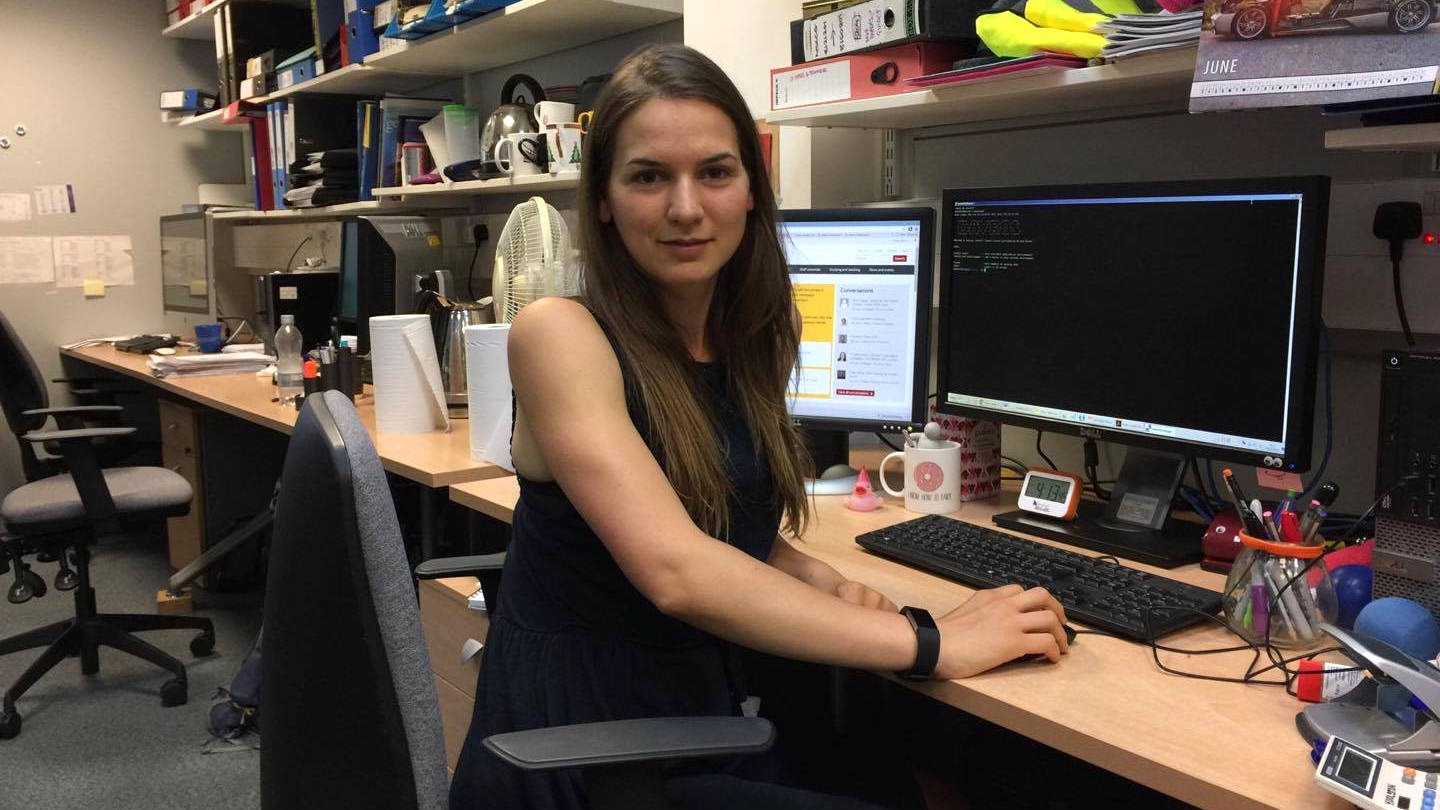
Molly Went, PhD student
The Institute of Cancer Research, London, provides world-leading teaching – offering several postgraduate learning opportunities including PhDs. This is the first of two posts in our inaugural Teaching Week that provide insight into the work of our talented PhD students, many of whom go on to become tomorrow's leaders in cancer research. Over to Molly…
I can summarise my PhD project in two sentences: I’m studying in the Division of Genetics and Epidemiology at the Institute of Cancer Research, supervised by Professor Richard Houlston. I’m looking at multiple myeloma, a cancer of the bone marrow and how peoples’ genes can influence their risk of getting this cancer.
This description, however, does little to divulge the day-to-day mechanics of what I do working in a Genetics and Epidemiology Lab.
Firstly, the word 'lab' may conjure images of scientists in white coats labouring at a bench. I do wear a lab coat and work in, as computational scientists like to call it, a ‘wet lab’, but the majority of work since starting my PhD has been computer based.
Genetics is the study of variation in our DNA and how we inherit traits through our DNA. Genes, made up of DNA, are the blueprint to an organism’s proteins.
Humans are complex creatures, consisting of a plethora of proteins. As such, we have a large set of genes and, it follows, an even larger sequence of DNA. While all of this information is intricately packaged into each one of our minute cells, handling this sheer level of data requires more than your average spreadsheet.
In fact, we use a high-performance computer (HPC) to handle this data. Your typical desktop PC will have 4 GB RAM and maybe two CPU cores, while a computer on the HPC that I use has 256 GB RAM and 20 cores. Bear in mind that the HPC is then made up of 54 computers, each with these particular specs, and you can see why they are often called supercomputers!
Identifying mutations
I spend much of my working day 'at the command line', asking the HPC to perform a series of operations on data our lab and collaborators have collected from tens and sometimes hundreds of thousands of sick and healthy individuals. I am interested in looking at a how a change, or mutation, in just one 'letter' of DNA can influence an individuals’ risk of developing myeloma.
By comparing the sequences of DNA in the sick and healthy individuals, I can see whether some DNA mutations are associated with a disease such as myeloma. This is known as a genome-wide association study (GWAS). Once I have identified any mutations, I can scour biological databases and attempt to pin down how these changes could send a healthy cell on the path to malignancy.
This involves not only looking at how DNA mutations affect the proteins they code for, but also, more often, how the mutations affect the way DNA is packaged, read and interpreted.
Find out more about our world-class teaching opportunities by looking at our other Teaching Week content which features news items, blog posts and videos.
Read more
Eureka moments
In my future work, I will move away from the computer and spend more time in the lab. I aim to take the results of the most recent GWAS on myeloma and understand the role that these DNA mutations play in a cellular environment.
Essentially, the root of what I do is problem solve. Each day I am presented with a new problem which I have to troubleshoot. I think that this principle is fundamental to all branches of science and is the reason I have transitioned successfully from a Master’s degree in chemistry to a PhD in genetics.
Every step of my education has taught me how to take a question and break it down to its component parts in order to understand what is happening. I spend my days at work intrigued and puzzled in equal measure, but I am always satisfied at the 'Eureka!' moment when I manage to successfully solve a problem and find my answer.

Professor Richard Houlston (left) with team members Amy Sherborne, Amit Sud, Phillip Law and Ben Kinnersley.
Exciting discoveries
All researchers at the ICR are working to solve an even bigger problem: 'What causes cancer and how can we cure it?'. Teams of scientists, clinicians and technicians are each researching their own separate piece of the puzzle and collaborations between the separate disciplines can lead to exciting proposals and discoveries.
Only recently, a collaboration between our lab and Dr Bissan Al-Lazikani’s group from Cancer Therapeutics won the Team Science Prize at the ICR conference, earning £10,000 toward their proposed project – a systematic genome-wide search for potential drug targets.
This led to much excitement in the Houlston Lab both in the run up to the event and in post-victory celebrations. It also saw me facing a different conundrum: how to make a giant magnifying glass (which formed an essential prop in the presentation of the project proposal) out of two swimming noodles and some gaffer tape. The group celebrated success with tea and ice cream in the glorious June sun.
As I approach the end of my first year, I am proud to have added three computer languages into my vocabulary, learnt a variety of new statistical models and had my first letter published in a journal. The ICR has already equipped me with some amazing skills by which to better understand and research cancer. I am excited to see what the next few years will bring.
comments powered by